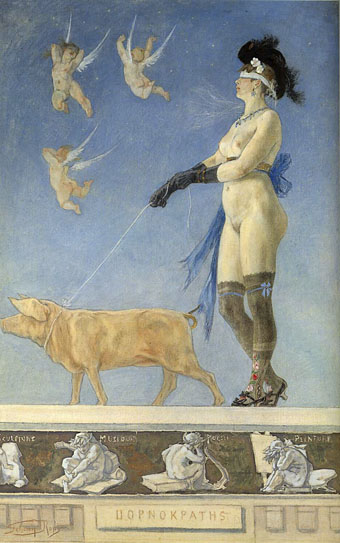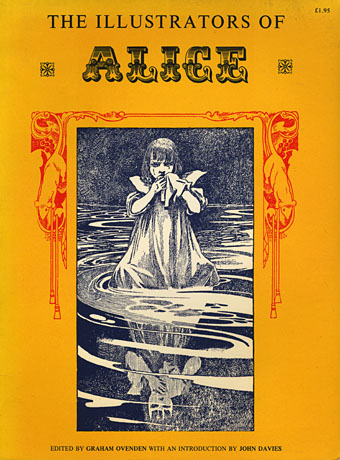Pornokrates (1878).
After Mr Peacay’s comments regarding Félicien Rops I thought it time to devote a post to this impious artist.
Rops, a Belgian working in Paris, is curious even by the standards of the disparate group who comprised the Symbolists and with whom he had some connections. Whereas many artists of the time might hint at a fashionable blasphemy or Satanism, Rops’ dealings with these subjects were unequivocal, as was the outright pornographic tone of many of his drawings. This can make much of his work seem modern in a way few artists of that period achieve today, and it’s a good bet that many Christians (especially those of the puritan American variety) would still find his pictures offensive. These weren’t the only works that Rops produced, there were plenty of landscapes and society portraits, but it’s these that he’s remembered for. Once again, posterity favours the forthright and the unique over uniformity and compromise.
• The Félicien Rops Museum
• Les Diaboliques by Barbey d’Aurevilly (1874): 8 illustrations
• Gallery of pornographic drawings at Arterotismo




